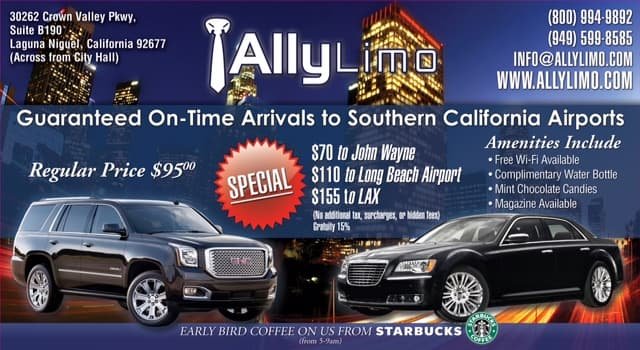Have you ever wondered why you don’t see many people using limousines in India? Despite their luxurious and glamorous appearance, limousines seem to be a rarity on the roads of this vast country. It’s a perplexing phenomenon considering the growing affluence and aspirations of the Indian population. So, what could be the reasons behind the limited popularity of limousines in India?
The reasons for the lack of widespread use of limousines in India can be attributed to a combination of factors. Firstly, the infrastructure and traffic conditions in many Indian cities pose significant challenges for these long and lustrous vehicles. Narrow roads, congested traffic, and lack of adequate parking spaces make maneuvering a limousine a daunting task. Additionally, the cost associated with owning and maintaining a limousine is considerably higher compared to other luxury cars available in the market. With these factors in mind, it becomes evident why people in India opt for more practical and economically viable transportation options, leading to the limited presence of limousines on Indian roads.
Limousines are not commonly seen in India due to several factors. Firstly, the cost of owning and maintaining a limousine is quite high, making it unaffordable for many individuals. Additionally, the traffic congestion in Indian cities may not be conducive to driving a large vehicle like a limousine. Moreover, the cultural preference for smaller and more fuel-efficient cars also contributes to the limited usage of limousines. However, despite these challenges, the demand for luxury transportation is increasing in India, and we may see more people using limousines in the future.
Why Don’t We See Many People Using Limousine in India?
Luxury cars have always been a symbol of prestige and status, with limousines being the epitome of elegance and class. These long and lavish vehicles are often associated with celebrities and VIPs around the world. However, when it comes to India, limousines are not a common sight on the roads. So, why don’t we see many people using limousines in India? Let’s delve into the reasons behind this phenomenon.
High Cost and Maintenance
One of the main reasons for the limited use of limousines in India is the high cost associated with these luxury vehicles. Limousines are expensive to purchase, and the cost of maintenance, insurance, and fuel adds to the overall expenses. The average price of a high-end limousine in India can range from several crores to tens of crores. This high upfront cost makes it unaffordable for most people.
Additionally, maintaining a limousine requires regular servicing and specialized mechanics, which can be expensive and time-consuming. The scarcity of authorized service centers and trained technicians for luxury cars further adds to the maintenance challenges. The cost of spare parts and customizations for limousines is also significantly higher compared to regular cars.
Considering the high cost of purchasing and maintaining a limousine in India, it becomes a luxury that only a select few can afford.
Practicality and Road Conditions
Another factor that contributes to the limited use of limousines in India is the practicality and road conditions. India is known for its congested and chaotic traffic, especially in major cities. The long and bulky nature of limousines can make maneuvering through narrow streets and heavy traffic challenging.
Moreover, the lack of designated parking spaces for such large vehicles can further discourage people from owning or using limousines on a regular basis. The limited availability of infrastructure that caters specifically to the needs of limousines, such as wide parking spaces, can be a deterrent for potential buyers.
Cultural Preferences and Social Factors
The cultural preferences and social factors in India also play a significant role in the limited usage of limousines. In Indian society, there is a strong emphasis on modesty and unpretentiousness. The idea of showing off wealth and indulging in luxury may not be well-accepted by everyone.
Moreover, the concept of personal space and privacy is highly valued in India. Limousines, with their open and spacious interiors, may not align with this cultural preference for personal space. People may prefer more compact and enclosed vehicles that offer a sense of privacy.
Additionally, the perception of limousines as vehicles primarily used by the rich and famous may discourage average individuals from considering them as a viable option. The social stigma associated with “showing off” or being ostentatious can deter people from purchasing or using limousines.
Emerging Trends and Alternatives
Although the usage of limousines in India is relatively low, there are emerging trends and alternatives that cater to the need for luxury transportation. Ride-hailing services like Uber and Ola have introduced luxury car options, including high-end sedans and SUVs, providing a more accessible and affordable alternative to limousines.
Furthermore, luxury bus services and rental companies offer customized vehicles with upscale amenities for special events and occasions. These alternatives provide a taste of luxury and comfort without the need for owning a limousine.
As India’s economy continues to grow and the aspirations of its citizens evolve, the demand for luxury vehicles may increase. With advancements in technology and infrastructure, the availability and accessibility of limousines may improve in the future.
In conclusion, the limited use of limousines in India can be attributed to factors such as high costs and maintenance, practicality and road conditions, cultural preferences, and emerging alternatives. While limousines may not be a common sight on Indian roads currently, the evolving landscape suggests that the scenario may change in the coming years.
Key Takeaways
- Limousines are not commonly seen in India due to various factors such as cost, limited demand, and cultural preferences.
- The high cost of purchasing and maintaining a limousine makes it unaffordable for many people in India.
- There is a limited demand for limousines in India as they are often perceived as a luxury reserved for special occasions or for high-profile individuals.
- The size and length of limousines are not suitable for the congested and narrow roads in many parts of India.
- India has a rich culture of public transportation, such as taxis, auto-rickshaws, and buses, which are more affordable and accessible for the majority of people.
Frequently Asked Questions
Here are some common questions related to the low usage of limousines in India:
1. What are the reasons behind the low usage of limousines in India?
There are several factors that contribute to the low usage of limousines in India. First, affordability plays a significant role. Owning and maintaining a limousine is expensive, and the cost of fuel and other operational expenses are high. Additionally, the luxury car market in India is dominated by other brands, making the availability of limousines limited.
Another reason is the lack of suitable infrastructure. Indian roads are often crowded and congested, and long and wide limousines may not be practical for navigating through these conditions. The lack of parking spaces and difficulties in maneuvering in tight spaces further deter people from using these vehicles.
2. Are there any cultural factors influencing the low usage of limousines in India?
Yes, cultural factors also play a role in the low usage of limousines in India. In Indian society, there is often a preference for smaller, more compact cars that are easier to maneuver and park. Additionally, the concept of luxury and status in India is often associated with other types of vehicles, such as luxury sedans or SUVs, rather than long and extravagant limousines.
Furthermore, the use of limousines is more commonly seen in Western countries, and Indian culture has its own unique preferences and values when it comes to transportation choices.
3. Are there any legal restrictions on the use of limousines in India?
There are certain legal restrictions on the use of limousines in India. In many states, there are specific regulations and requirements for operating limousine services, including obtaining permits and licenses. These regulations often involve stringent safety measures and compliance with certain standards.
Additionally, there may be restrictions on the use of tinted windows, which are often associated with limousines. These restrictions are in place to ensure transparency and security.
4. Are there any alternatives to limousines that are more popular in India?
Yes, there are several alternatives to limousines that are more popular in India. Luxury sedans and SUVs from brands like Mercedes-Benz, BMW, and Audi are commonly seen on Indian roads. These vehicles offer similar levels of luxury and comfort while being more compact and suitable for Indian road conditions.
Additionally, chauffeur-driven luxury car services are also preferred by many individuals and businesses in India. These services provide the convenience and comfort of a professional driver without the need for owning a luxury vehicle.
5. Could the low usage of limousines in India change in the future?
While it is difficult to predict the future, there is a possibility that the usage of limousines in India could change. As the economy grows and the luxury car market expands, there may be an increase in demand for unique and extravagant vehicles like limousines.
However, for the foreseeable future, the low usage of limousines in India is likely to continue due to factors such as affordability, infrastructure limitations, cultural preferences, and the availability of alternative luxury vehicles.
In India, the use of limousines is not as common as in other countries. One reason is the cost associated with purchasing and maintaining a limousine. These luxury vehicles require a significant investment, making them unaffordable for many people.
Additionally, the infrastructure and traffic conditions in India may not be conducive to using a limousine. The narrow roads and congested traffic make it difficult for these long vehicles to navigate through the city.
Furthermore, cultural factors also play a role in the limited use of limousines. In Indian society, there is less emphasis on individual luxury and more emphasis on practicality and affordability. People prefer more practical modes of transportation that can accommodate larger groups and are more cost-effective.
In conclusion, the limited use of limousines in India can be attributed to the high cost, infrastructure challenges, and cultural preferences. These factors have resulted in people opting for more practical and affordable transportation options.






